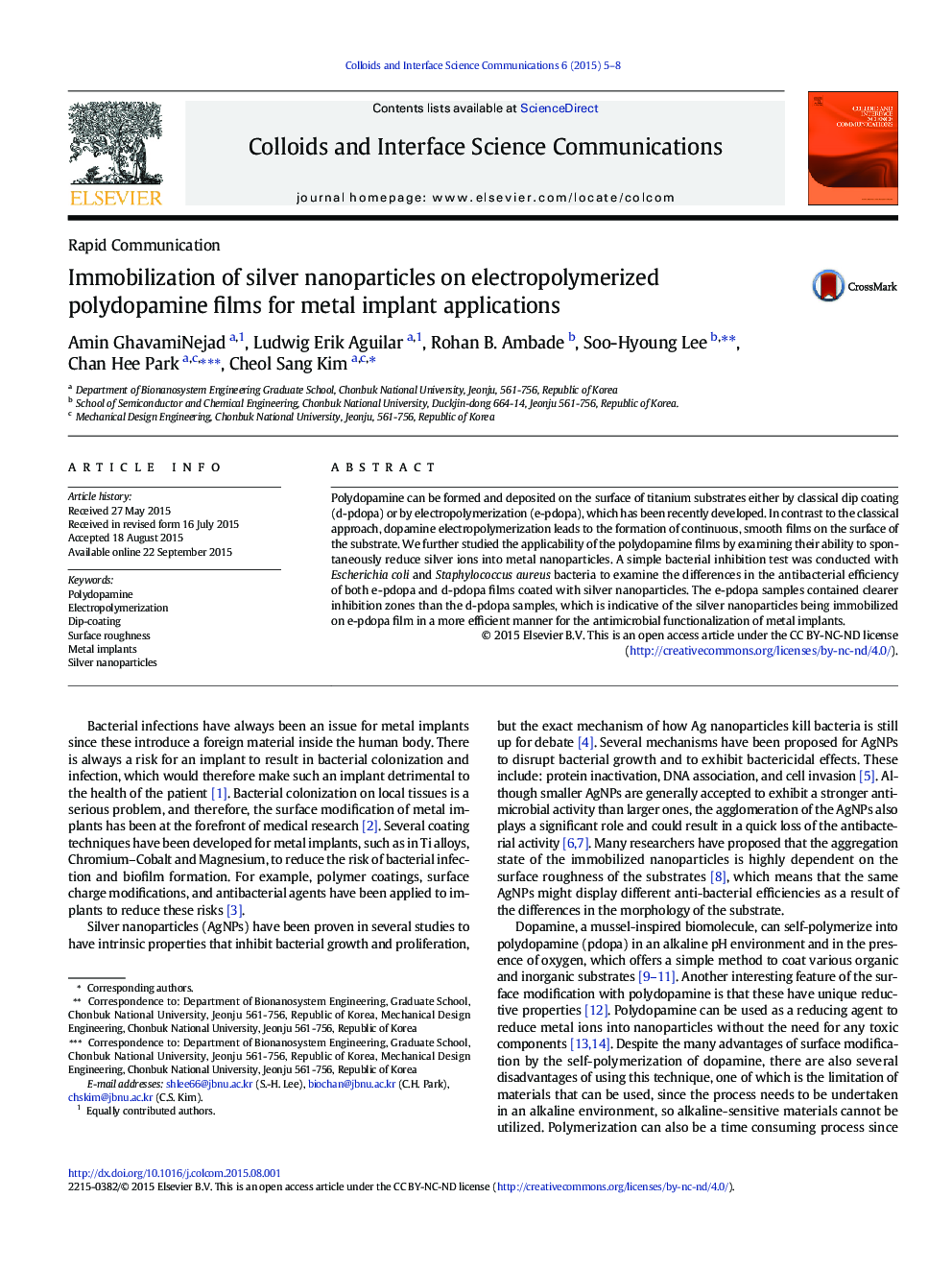| Article ID | Journal | Published Year | Pages | File Type |
|---|---|---|---|---|
| 591400 | Colloid and Interface Science Communications | 2015 | 4 Pages |
Polydopamine can be formed and deposited on the surface of titanium substrates either by classical dip coating (d-pdopa) or by electropolymerization (e-pdopa), which has been recently developed. In contrast to the classical approach, dopamine electropolymerization leads to the formation of continuous, smooth films on the surface of the substrate. We further studied the applicability of the polydopamine films by examining their ability to spontaneously reduce silver ions into metal nanoparticles. A simple bacterial inhibition test was conducted with Escherichia coli and Staphylococcus aureus bacteria to examine the differences in the antibacterial efficiency of both e-pdopa and d-pdopa films coated with silver nanoparticles. The e-pdopa samples contained clearer inhibition zones than the d-pdopa samples, which is indicative of the silver nanoparticles being immobilized on e-pdopa film in a more efficient manner for the antimicrobial functionalization of metal implants.
Graphical abstractFigure optionsDownload full-size imageDownload as PowerPoint slide
